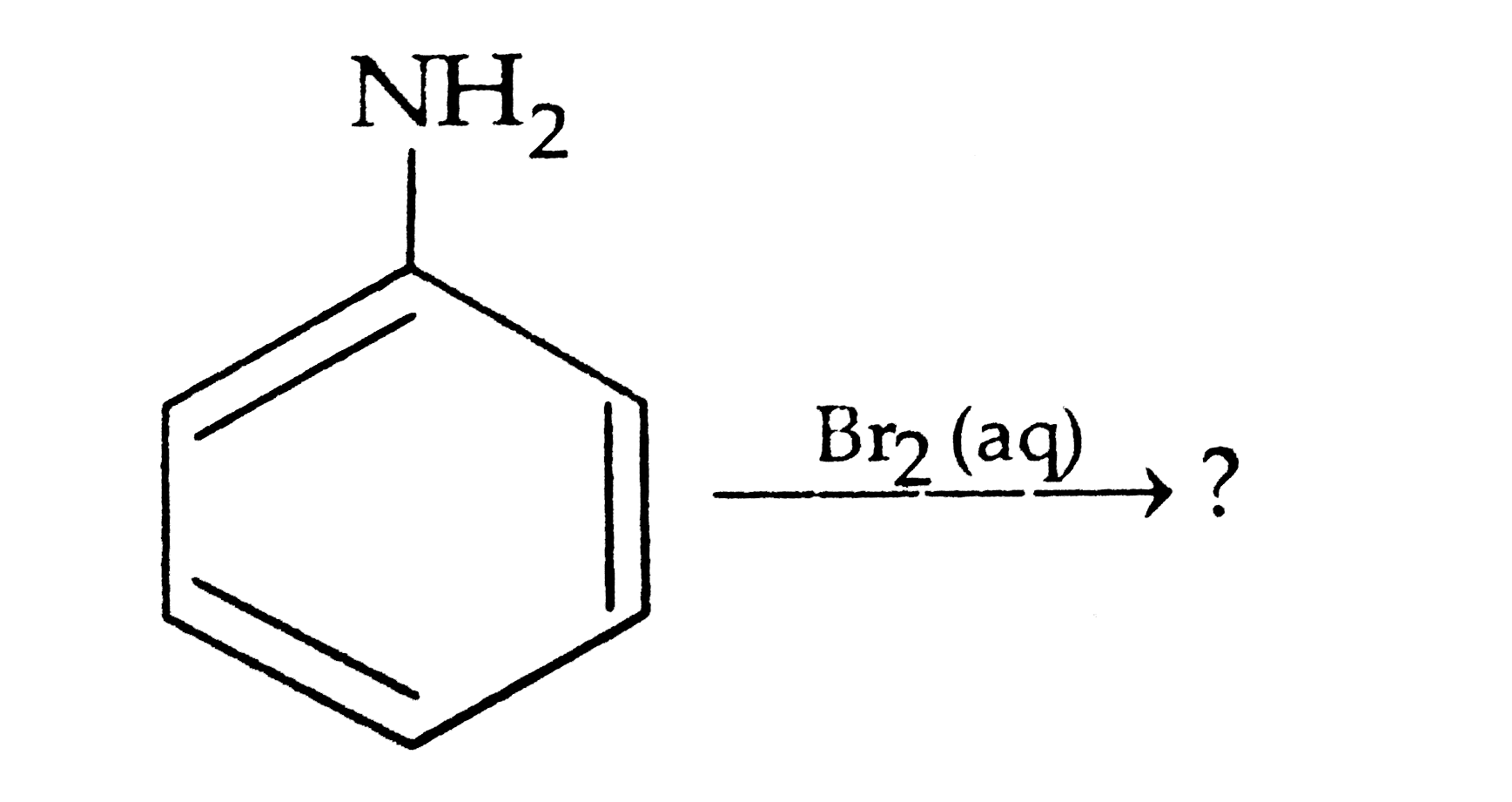The following reaction constituts :
RNH2+S=C=SHgCl2−−−→R−N=C=SAlkyl isothicoyanate+HgS
Mustard oil reaction
Test for 3∘ amine
Test for 2∘ amine
Test for CS2
The correct Answer is:A
To solve the given question regarding the reaction of a primary amine with carbon disulfide in the presence of mercuric chloride, we will break down the process step by step.
1. Identify the Reactants:
- The reactants in the reaction are a primary amine (RNH₂) and carbon disulfide (S=C=S).
2. Reaction with Carbon Disulfide:
- The primary amine reacts with carbon disulfide to form dithiocarbamic acid. The reaction can be represented as:
RNH2+CS2→RNHCS2H
- This intermediate is known as dithiocarbamic acid.
3. Addition of Mercuric Chloride:
- When mercuric chloride (HgCl₂) is added to the reaction mixture, it facilitates the conversion of dithiocarbamic acid to isothiocyanate. The reaction can be represented as:
RNHCS2H+HgCl2→R−N=C=S+HgS+2HCl
- Here, R-N=C=S is the alkyl isothiocyanate formed in the reaction.
4. Formation of Mercury Sulfide:
- Along with the formation of alkyl isothiocyanate, mercuric sulfide (HgS) is precipitated out as a byproduct.
5. Characteristics of Isothiocyanates:
- Alkyl isothiocyanates have a characteristic mustard-like odor, which is significant in identifying the reaction.
6. Conclusion:
- The overall reaction constitutes the formation of alkyl isothiocyanate and mercuric sulfide, and it is known as the mustard oil reaction, which specifically tests for primary amines.
Final Answer:
The reaction constitutes a test for primary amines known as the mustard oil reaction, producing alkyl isothiocyanate (R-N=C=S) and mercuric sulfide (HgS).
---
- The reactants in the reaction are a primary amine (RNH₂) and carbon disulfide (S=C=S).
- The primary amine reacts with carbon disulfide to form dithiocarbamic acid. The reaction can be represented as:
RNH2+CS2→RNHCS2H
- This intermediate is known as dithiocarbamic acid.
- When mercuric chloride (HgCl₂) is added to the reaction mixture, it facilitates the conversion of dithiocarbamic acid to isothiocyanate. The reaction can be represented as:
RNHCS2H+HgCl2→R−N=C=S+HgS+2HCl
- Here, R-N=C=S is the alkyl isothiocyanate formed in the reaction.
- Along with the formation of alkyl isothiocyanate, mercuric sulfide (HgS) is precipitated out as a byproduct.
- Alkyl isothiocyanates have a characteristic mustard-like odor, which is significant in identifying the reaction.
- The overall reaction constitutes the formation of alkyl isothiocyanate and mercuric sulfide, and it is known as the mustard oil reaction, which specifically tests for primary amines.
The reaction constitutes a test for primary amines known as the mustard oil reaction, producing alkyl isothiocyanate (R-N=C=S) and mercuric sulfide (HgS).
Topper's Solved these Questions
- ORGANIC COMPOUNDS WITH FUNCTIONAL GROUPBOOK - CENGAGE CHEMISTRY ENGLISHCHAPTER - ORGANIC COMPOUNDS WITH FUNCTIONAL GROUPEXERCISE - Exercises Assertion And Reasoning
9 Videos
- ORGANIC COMPOUNDS WITH FUNCTIONAL GROUPBOOK - CENGAGE CHEMISTRY ENGLISHCHAPTER - ORGANIC COMPOUNDS WITH FUNCTIONAL GROUPEXERCISE - Archives Single Correct
10 Videos
- ORGANIC COMPOUNDS WITH FUNCTIONAL GROUPBOOK - CENGAGE CHEMISTRY ENGLISHCHAPTER - ORGANIC COMPOUNDS WITH FUNCTIONAL GROUPEXERCISE - Exercises Multiple Correct
18 Videos
- NUCLEAR CHEMISTRYBOOK - CENGAGE CHEMISTRY ENGLISHCHAPTER - NUCLEAR CHEMISTRYEXERCISE - Archives Subjective
13 Videos
- P-BLOCK GROUP 15 ELEMENTS - THE NITROGEN FAMILYBOOK - CENGAGE CHEMISTRY ENGLISHCHAPTER - P-BLOCK GROUP 15 ELEMENTS - THE NITROGEN FAMILYEXERCISE - Exercises Archives (Subjective)
28 Videos
Similar Questions
Complete the following reaction:
o−HOOC(A)−C6H4−CH2−PhSOCl2−−−→(B)
Anhyd−−−−−−−−−→AlCl3,CH3Cl(C)Zn+Hg−−−−−−−→+HCl(D)
View SolutionIn the following SN1 reaction:
_S01_431_Q01.png) OH⊕−−→SN1(A) is
OH⊕−−→SN1(A) is
View SolutionComplete the following reactions :
C2H5OH+O2Bacterium−−−−−−−−−→Mycoderma aceti
View SolutionComplete the following reactions :
C2H5OHConc.H2SO4−−−−−−−→160∘−170∘C
View SolutionIn the following reaction C is, CH3−CH=CH2+ HCl
Organic−−−−−−→PeroxideAAg2O−−−−−→MoistBEt MgBr−−−−→C
View SolutionConsider the following reaction sequence,
CH3C≡CHaq.H2SO4−−−−−→HgSO4APCl5−−→HeatB
The products (A) and (B) are, respectively,
View SolutionWrite the main products of the following reactions:
(i) C6H5N+2Cl−H3PO2+H2O−−−−−−−−→?

(iii) CH3−C∣∣O−NH2Br2+NaOH−−−−−−−→?
View SolutionIn the following reaction sequence
Ph−C≡CHaq.H2SO4−−−−−→Hg2+A1.CH3MgI−−−−−−→2.H2OB
the product (B) is
View SolutionComplete the following reaction. Also give the colour change :
NiCl2(______)+H2S→_____(Black)⏐⏐ ⏐↓+2HCl
View SolutionName the intermediate species formed in the following reactions :
(a) CH3CH2−N⊕≡N..→I+:N≡N:
(b) CH3CH2−C≡C−H+⊕KΘNH2→II+NH3
( c) Ph−CH=CH−Me+HBr→III+BrӨ
(d) Ph−Ph∣C∣OH−CH3+H⊕→IV+H2O
( e)CH3CH2..O..H−¯e−−→V→VI+.CH3
(f) CH3−..N=..N−CH3Δ−−→VIII+ZnI2
(h) PhCH2C1+A1C13→IX+[A1C1]Ө
(i) CH3−C≡C−CH3+Liliq.NH3−−−−→C2H5OHX+Li⊕.
View Solution
